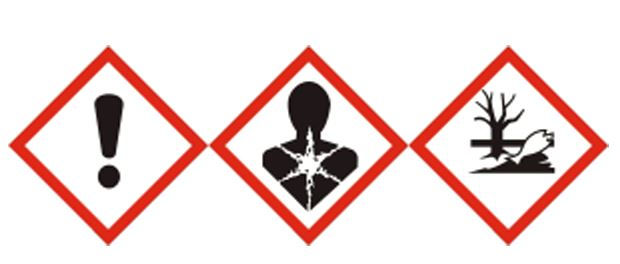All About Cannabidiol (CBD)
- Terry Clayton

- Mar 7, 2021
- 3 min read
Updated: Feb 10, 2023
This page will be more a reference than a blog as I felt the need to organize everything that is known about CBD in one place. I hope you find this helpful. Please suggest additions as this will be a living document. -Terry
Overview
Cannabidiol (CBD) is one of at least 144 phytocannabinoids found in the Cannabis Sativa plant. CBD which can make up to 40% of the plant's extract is a compound showing strong promise as a pharmaceutical demonstrating analgesic, anticonvulsant, muscle relaxant, anxiolytic, and antipsychotic properties. CBD has also shown neuroprotective, anti-inflammatory, and antioxidant activity as well. There is also growing interest in CBN and CBG which I will discuss in future posts.

Chemical Properties:
Chemical Formula C21H30O2
IUPAC Name 2-[(1R,6R)-6-Isopropenyl-3-methylcyclohex-2-en-1-yl]-5-pentylbenzene-1,3-diol
CAS Number 13956-29-1
Molecular Weight 314.469 g/mol
Melting Point 66°C (151°F)
Solubility Insoluble in Water; soluble in medium chain triglycerides at ~300 mg/mL
Pain and Inflammation
CBD has been shown to be an agonist to transient receptor potential vanilloid 1 (TRPV1) receptors and has been shown to reduce pain and inflammation. Pumroy has resolved ligand bound TRPV2 suggesting CBD may act at the same location on TRPV1. The binding pocket was found to be lined with hydrophobic with aromatic residues. Key residues include Leu631, Tyr634, Val635 and Leu638 on the S6 helix of one monomer, Leu537, Phe540, Leu541 on the S5 helix and Met640 on the S6 helix of an adjacent monomer, while the pore helix of the adjacent monomer caps the pocket with residues Phe601 and Thr604.

Endocannabinoid Receptor Activity
CBD acts as a negative allosteric modulator on the cannabinoid CB1 receptor. CB1 is the most abundant G-Protein Coupled Receptor (GPCR) in the body. Allosteric regulation is the modulation of receptor activity on a functionally distinct site from the agonist or antagonist binding site. This is clinically significant as the direct agonist, THC is limited by its psychomimetic effects which include changes to mood, memory, and anxiety. Leann Chan produced an excellent animation of the endocannabinoid signaling system.
The mechanism parallels how benzodiazepines I developed are used as allosteric modulators of the GABA receptors. CBD is commonly administered by inhalation, orally or in a topical preparation. Hammel et. al published work demonstrating topical administration of cannabidiol reduces inflammation and pain-related behavior.
Exemplary Transdermal Formulation:
Component Concentration
CBD 1-10%
Ethanol 72%
Ultrapure water 6-16%
Isopropyl myristate 1%
Carbopol 980 0.9%
NaOH (0.1N) 7.0%
Procedure
Dissolve the desired dose of CBD into the ethanol until fully dissolved. Then add the water and isopropyl myristate sequentially. Next add the Carbopol. Use ultrasonics to ensure polymer is fully dispersed. To activate the gelling of the Carbopol, add the sodium hydroxide. Stability of any formulation developed should be tested for degradation.
Cannabinoid Delivery Systems
In 2018, Brunei et al. published an overview of transdermal delivery techniques covering cannabinoid delivery systems for treatment of pain and inflammation. The formulation strategies included oils, gels, patches, and nanoemulsions.
Conversion of CBD to Δ9-THC
Cannabidiol can be converted to Δ8-THC and/or Δ9-THC under the proper reaction conditions. Essentially the process entails cyclization in an acidic environment. Yield will depend on reaction conditions but can approach an impressive 70%!

Using a Bronsted acid in an appropriate solvent chosen for solubility, one can produce the Δ8-THC at high yield. In order to target the Δ9-THC, a Lewis acid should be selected. This was originally performed by Gaoni and Mechoulam in 1966. Full Spectrum Laboratories was able to acquire a patent on similar pathways with yield improvements under US7399872B2.
Charlotte Figi
A young girl from Colorado diagnosed with Dravet Syndrome who was successfully treated with CBD. Dravet Syndrome is a genetic mutation of the SCN1A gene characterized by multiple, prolonged seizures. Charlotte's story has been shared around the world legitimizing the use of medical cannabis.
Potency and Cannabinoid Profiling
In the last few years we have seen an explosion of new products based on CBD. A 2018 study conducted in the European Union discovered wide variability in the CBD concentration in commercial CBD oil preparations. This has led to concern that the market is flooded with low potency and low quality CBD products.

Thus quality manufacturers are utilizing 3rd party laboratories to validate potency and cannabinoid profile. Cannabinoid testing identifies the actives as well as concentration in plants, concentrates, and preparations. High performance liquid chromatography (HPLC) is the preferred methodology for potency and profiling. It is useful for growers as well as product developers.
Therapeutic for Covid-19?
A fascinating paper was just published in the Journal of Natural Products describing how CBDA (the chemical precursor to CBD) was shown to prevent infection from the virus that causes Covid-19. Its potentially therapeutic value comes from its ability to bind to the spike protein preventing the spike protein from binding to ACE2. The initial research was conducted on human epithelial cells.

More information coming...
-last edited January 15th, 2022








Comments